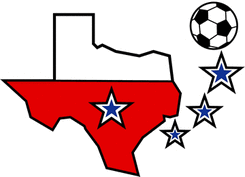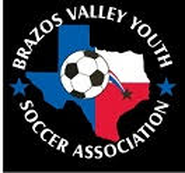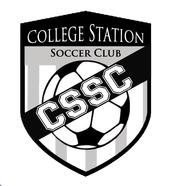.
Effective Date: July 10th 2014
Players: 8 players from each team including goalkeepers; minimum of 6 players.
Roster size: Up to 14 players.
Ball size: Number 5.
Goal Size: 7ft x 21ft or 6ft x 18ft
Field Size: 40-60 yards wide x 60-80 yards long
Time: 25-minute halves and 5-minute halftime.
Playing Time: Each player will play at least half of each game unless unable to due to illness, injury or disciplinary reasons.
Spectators: Coaches and parents are prohibited from the area behind the goal line. Parents will sit on the opposite side of the field from the teams. Teams will be positioned on one side of the field and the parents/spectators will be on the other side. Coaches are responsible for the sportsmanship of the team’s parents. No one should ever yell disparaging remarks at the opposing team or referees at any time.
Referees: If there is no referee at game time, begin play within 5 minutes with an adult (or one adult from each team if preferred) as the referee.
Assistant Referees: The BVSRA will assign assistant referees for games whenever possible.
Substitutions: A team may substitute players (if the referee approves) at the following times: 1) after any goal, 2) at halftime, 3) during any injury stoppage, 4) prior to any goal kick, 5) prior to your throw-in, or 6) prior to opponent throw-in if that team substitutes. Substitutes arenot allowed on free kicks, corner kicks, or penalty kicks. (Remember: There is not a stoppage of play on free kicks and throw-ins; allowing substitution interrupts play).
Offside: If a ball is passed to a player by a team member and the receiving player does not have two opponents(one being the Goalie) between he/she and the goal line at the time the pass begins, offside will be called by referee. If the ball is not passed to an offside player, there is no offside. There is no offside on goal kicks, throw-ins or corner kicks.
Penalty kicks: (from 12 yards directly in front of the goal): A penalty kick will be awarded for the following offenses inside the penalty area (big box): 1) a field player deliberately uses hands to prevent a goal, 2) serious tripping or tackling, 3) severe pushing. All other fouls will be awarded direct free kicks. The referee will tell each coach that a penalty kick is being awarded and allow reasonable time for the players to position themselves.
Direct free kick: (ball may be kicked directly into goal): Direct free kicks from the spot of the foul will be awarded for only the most severe offenses. These include hard tackling or tripping, severe pushing and intentional handballs. The referee will loudly announce that a direct kick is being awarded to reinforce the meaning of the hand signal.
Indirect free kick: (ball must touch another player before entering the goal): All other fouls will be penalized with an indirect free kick. (Remember: A stoppage of play is not required on free kicks; the ball may be kicked as soon as it is placed on the spot).
Goal kicks: The ball will be kicked from any point within the goal area (small box). The ball does NOT have to leave the box (once the ball is touched it is in play). Opponents will remain outside the penalty area until the ball is kicked.
Throw-ins: Players will have both feet on the ground on or behind the touchline (sideline). The ball is thrown from behind and over the head. The thrower may not touch the ball until it has touched another player. The referee will enforce these rules by awarding the ball to the opposing team if there is a violation.
Slide Tackling: Slide tackling is NOT allowed by any player, including the goalkeeper, when within playing distance of another player and will be sanctioned with an automatic yellow card. Slide Tackles from behind will be sanctioned with an automatic red card. All violations will result in an indirect kick awarded for dangerous play unless committed within the penalty box and denying an imminent goal scoring opportunity. Players must stay upright, on their feet, and under control. Fouls
will be called and cards administered even if there is no contact. Players are allowed to slide to stop/intercept a ball when the player is not within playing distance of another player. Playing distance is considered to be three yards or closer.
Uniforms/Equipment: All players must wear shin guards, soccer cleats and soccer socks to all practices and games. Shirt must be worn tucked in. Socks must be worn over the Shin guards. No cleats on toes of shoes (like baseball shoes).
Practices: Prior to the first game, 4 practices are allowed. After the first game, two practices per week are allowed. Practices are no more than 90 minutes long.
CSSC Card Policy for Players and Coaches:
Players:
Player Yellow Card (caution): Warning for player to stop behavior. Two yellow cards in the same game will result in a red card (see “Player Red Card” below).
Player Red Card (ejection): A red card will result in the player leaving the field of play for the rest of the current game AND the next game. This may be applied to same day games for double headers or the tournament. The team must play down a player for the remainder of the game in which the red card was received. However, in the subsequent game where the red carded player cannot play, the team does not play down a player.
Coaches:
Coach Yellow Card (caution). If a coach receives a yellow card, it is a caution for that coach regarding their behavior but the coach can continue to coach the game. Yellow cards will carry forward in the season however (are cumulative), and a 2nd yellow during the same season will result in a red, with consequences in that game in which the 2nd yellow was received, as outlined below (see “Coach Red Card”).
Coach Red Card (ejection). A red card (or two yellows in the same game or a 2nd yellow during the season) is an automatic expulsion for the remainder of the current game AND the next game. If an assistant coach is available for the game in which the red card was incurred, they may finish coaching the game. If an assistant coach is not available and no other CSSC-approved coaches with a KidsSafe badge are readily available, the game will immediately end in a 3-0 loss for the offending team. All red cards will be logged to the head referee and shared with the CSSC board. Depending on the severity of the card further disciplinary action may be taken at the board’s discretion.
Coaches who receive multiple yellow or red cards over the course of a single season may face further punishment including removal from the league.
Appeals: Coaches may file an appeal if a red card is received. An appeal must be filed in writing by the following day by 8pm (CST) by emailing the CSSC President at [email protected] and a meeting with CSSC Board Members will be scheduled to review the appeal. A decision will be rendered within 48hrs of the meeting to review the appeal. If a Board Member is coaching and receives a red card, no appeals are allowed.
Players: 8 players from each team including goalkeepers; minimum of 6 players.
Roster size: Up to 14 players.
Ball size: Number 5.
Goal Size: 7ft x 21ft or 6ft x 18ft
Field Size: 40-60 yards wide x 60-80 yards long
Time: 25-minute halves and 5-minute halftime.
Playing Time: Each player will play at least half of each game unless unable to due to illness, injury or disciplinary reasons.
Spectators: Coaches and parents are prohibited from the area behind the goal line. Parents will sit on the opposite side of the field from the teams. Teams will be positioned on one side of the field and the parents/spectators will be on the other side. Coaches are responsible for the sportsmanship of the team’s parents. No one should ever yell disparaging remarks at the opposing team or referees at any time.
Referees: If there is no referee at game time, begin play within 5 minutes with an adult (or one adult from each team if preferred) as the referee.
Assistant Referees: The BVSRA will assign assistant referees for games whenever possible.
Substitutions: A team may substitute players (if the referee approves) at the following times: 1) after any goal, 2) at halftime, 3) during any injury stoppage, 4) prior to any goal kick, 5) prior to your throw-in, or 6) prior to opponent throw-in if that team substitutes. Substitutes arenot allowed on free kicks, corner kicks, or penalty kicks. (Remember: There is not a stoppage of play on free kicks and throw-ins; allowing substitution interrupts play).
Offside: If a ball is passed to a player by a team member and the receiving player does not have two opponents(one being the Goalie) between he/she and the goal line at the time the pass begins, offside will be called by referee. If the ball is not passed to an offside player, there is no offside. There is no offside on goal kicks, throw-ins or corner kicks.
Penalty kicks: (from 12 yards directly in front of the goal): A penalty kick will be awarded for the following offenses inside the penalty area (big box): 1) a field player deliberately uses hands to prevent a goal, 2) serious tripping or tackling, 3) severe pushing. All other fouls will be awarded direct free kicks. The referee will tell each coach that a penalty kick is being awarded and allow reasonable time for the players to position themselves.
Direct free kick: (ball may be kicked directly into goal): Direct free kicks from the spot of the foul will be awarded for only the most severe offenses. These include hard tackling or tripping, severe pushing and intentional handballs. The referee will loudly announce that a direct kick is being awarded to reinforce the meaning of the hand signal.
Indirect free kick: (ball must touch another player before entering the goal): All other fouls will be penalized with an indirect free kick. (Remember: A stoppage of play is not required on free kicks; the ball may be kicked as soon as it is placed on the spot).
Goal kicks: The ball will be kicked from any point within the goal area (small box). The ball does NOT have to leave the box (once the ball is touched it is in play). Opponents will remain outside the penalty area until the ball is kicked.
Throw-ins: Players will have both feet on the ground on or behind the touchline (sideline). The ball is thrown from behind and over the head. The thrower may not touch the ball until it has touched another player. The referee will enforce these rules by awarding the ball to the opposing team if there is a violation.
Slide Tackling: Slide tackling is NOT allowed by any player, including the goalkeeper, when within playing distance of another player and will be sanctioned with an automatic yellow card. Slide Tackles from behind will be sanctioned with an automatic red card. All violations will result in an indirect kick awarded for dangerous play unless committed within the penalty box and denying an imminent goal scoring opportunity. Players must stay upright, on their feet, and under control. Fouls
will be called and cards administered even if there is no contact. Players are allowed to slide to stop/intercept a ball when the player is not within playing distance of another player. Playing distance is considered to be three yards or closer.
Uniforms/Equipment: All players must wear shin guards, soccer cleats and soccer socks to all practices and games. Shirt must be worn tucked in. Socks must be worn over the Shin guards. No cleats on toes of shoes (like baseball shoes).
Practices: Prior to the first game, 4 practices are allowed. After the first game, two practices per week are allowed. Practices are no more than 90 minutes long.
CSSC Card Policy for Players and Coaches:
Players:
Player Yellow Card (caution): Warning for player to stop behavior. Two yellow cards in the same game will result in a red card (see “Player Red Card” below).
Player Red Card (ejection): A red card will result in the player leaving the field of play for the rest of the current game AND the next game. This may be applied to same day games for double headers or the tournament. The team must play down a player for the remainder of the game in which the red card was received. However, in the subsequent game where the red carded player cannot play, the team does not play down a player.
Coaches:
Coach Yellow Card (caution). If a coach receives a yellow card, it is a caution for that coach regarding their behavior but the coach can continue to coach the game. Yellow cards will carry forward in the season however (are cumulative), and a 2nd yellow during the same season will result in a red, with consequences in that game in which the 2nd yellow was received, as outlined below (see “Coach Red Card”).
Coach Red Card (ejection). A red card (or two yellows in the same game or a 2nd yellow during the season) is an automatic expulsion for the remainder of the current game AND the next game. If an assistant coach is available for the game in which the red card was incurred, they may finish coaching the game. If an assistant coach is not available and no other CSSC-approved coaches with a KidsSafe badge are readily available, the game will immediately end in a 3-0 loss for the offending team. All red cards will be logged to the head referee and shared with the CSSC board. Depending on the severity of the card further disciplinary action may be taken at the board’s discretion.
Coaches who receive multiple yellow or red cards over the course of a single season may face further punishment including removal from the league.
Appeals: Coaches may file an appeal if a red card is received. An appeal must be filed in writing by the following day by 8pm (CST) by emailing the CSSC President at [email protected] and a meeting with CSSC Board Members will be scheduled to review the appeal. A decision will be rendered within 48hrs of the meeting to review the appeal. If a Board Member is coaching and receives a red card, no appeals are allowed.


